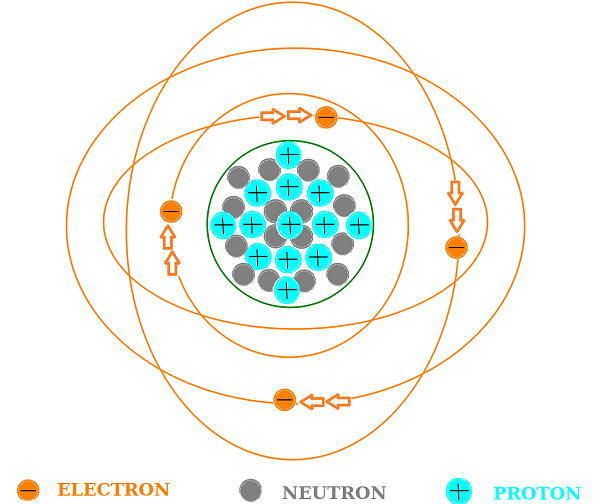Chapter 2 - Atomic Structure
Atomic Structure of Atoms
The image below represents the Bohr Model - where atoms are depicted as having a "Planetary" structure.
The atom has a Nucleus at the center - which would represent a planet. And it's surrounded by one or more
objects - which would represent a moon or other satellite "orbiting" the planet. Like any model - it's
just a way to visualize what an atom might look like. The Nucleus contains Protons and Neutrons. The
spinning satellites are Electrons. Protons have a positive charge - Neutrons have no charge and Electrons
have a negative charge. If you're familiar with the Periodic Table of Elements - you'll notice that the
image below doesn't represent any particular atom. Or perhaps it does - I don't know -
I haven't checked. In any case - it's not important - it's just a representation of the atomic
structure of atoms.

Atomic Structure of Atoms - Bohr Model
I bring up atoms so I can mention the Valence Shell - which is the outer most shell of electrons. The farther away the electrons are from the nucleus - the weaker the hold is on the electrons. Thus making it easier to free the electrons from the atom. Atoms that have one to three electrons it their Valence Shell - tend to make good conductors. There are three categories of materials used in electronics - conductors, semiconductors, and insulators. The elements most often used for conductors are Gold, Silver and Copper. Silver is the best conductor but Copper is used in most cases because it's almost as good and much less expensive. Semiconductors as the name implies fall inbetween conductors and insulators. They have fewer electrons in their Valence Shell than conductors but can still conduct current based on how they are manufactured. Silicon and Germanium are the main elements used in creating semiconductors such as diodes, transistors and integrated circuits. Finally, Insulators have no free electrons in the Valence Shell and do not conduct current. Insulators are nonmetallic materials used to block current. Examples of elements used as insulators are porcelian, glass, and teflon - among others.
